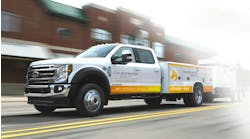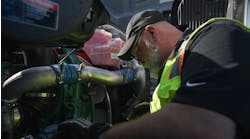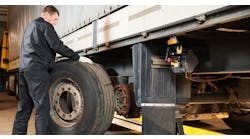Studies of maintenance worker productivity conclude that obtaining parts for maintenance jobs is a major time consumer. The question on planned work – where the parts are mostly known in advance – is who should be responsible for having them on hand?
One way to avoid problems is with kitting. This is the picking and packing all the parts for a planned maintenance job. In some cases, the kit also includes specialized tools and test gear.
The items are generally picked during off-peak hours a day to a week before the job is scheduled.
“A well-implemented kitting process will pay huge benefits in the form of reduced inventory investment and increased utilization of maintenance technicians and storeroom employees, as well as overall equipment reliability,” says Wally Wilson, an expert on material management with Life Cycle Engineering (www.lce.com), a company that provides engineering solutions that deliver lasting results for private industry, public entities, government organizations and the military.
Kitting Example
In a large mining truck maintenance shop, the manager obtained the luggage lockers from the town’s bus station before it was torn down. He had the lockers mounted so that the doors were outside the maintenance warehouse next to the issue window.
The back of the lockers were inside the cage and removed, like the open back of P.O. boxes. He bought tubs that slid into the lockers’ width and depth.
When the parts were picked for a maintenance job, they were placed into the tub, along with the printed work order. The tub was put into a locker. The key for the locker was put into the job envelope. When the technicians showed up with a planned work order, the parts counter people just handed them the envelope with the key and checked off the pick list.
Any large parts were noted on the pick list and located on pallets next to the lockers.
Big Issues
- Issue No. 1. What happens if a repair for a broken down vehicle needs the same part that is already kitted? This seems to be most common in the middle of the night when no staff is around.
The simple solution is to require the person taking the part from a kit to somehow “officially” notify the parts room/warehouse that the part was taken. The parts room/warehouse then “officially” notifies whoever is responsible for the work schedule to declare the job no longer “ready to go.”
The parts room/warehouse then initiates immediate replacement with priority proportional to the critically of the original job.
- Issue No. 2. When a planned job is rescheduled, the question is should the picked parts be returned to the stock. This will be a judgement call.
Typically, if the job will be done within a week or two, it is okay to keep the parts kitted. After that, they should be returned.
Rescheduling introduces false usage which might stimulate over ordering. When the job is kitted, it is charged to usage. The system might reorder even though the part is on the kit shelf. If the part is then returned, the maximum might be exceeded.
- Issue No. 3. The work planner should anticipate certain situations. For example, if a bearing is bad, then the opposite bearing is likely to be bad as well. In such instances, it is okay for the kit to contain a few extra parts, just in case.
Your systems have to allow quick and simple returns, or the extra parts will disappear.
Kitting Questions
The answer to these questions can help you develop a workable kitting strategy.
- How many planned jobs do you go through in a week? This will tell you how much space will be needed for kits.
- What is the average number of parts on a work order? The higher this is, the greater the chance one part will be missing.
- Is job planning mature and commonly held to be pretty accurate? Kitting is more valuable as planning gets better.
- Do you have enough knowledgeable personnel in the parts room/warehouse? Without such people, kits will often be late, and that doesn’t help productivity.
- Are there good relationships between parts room/warehouse, planners and maintenance workers? The kits will get better if these groups freely communicate.
- Does the parts room/warehouse maintain a decent service level? Kitting works best when most of the items are already in stock.
- Is the physical inventories for parts within 3 percent of the Quantity on Hand (QOH)? This shows if there is already good reporting discipline.
Joel Levitt is director of projects for Reliabilityweb.com’s Reliability Leadership Institute. Reliabilityweb.com provides the latest reliability and uptime maintenance news and educational information to help make asset managers, reliability leaders and maintenance professionals safer and more successful. The Reliability Leadership Institute is a community of practice to improve how organizations deliver asset performance through the use of Uptime Elements, a reliability framework.




